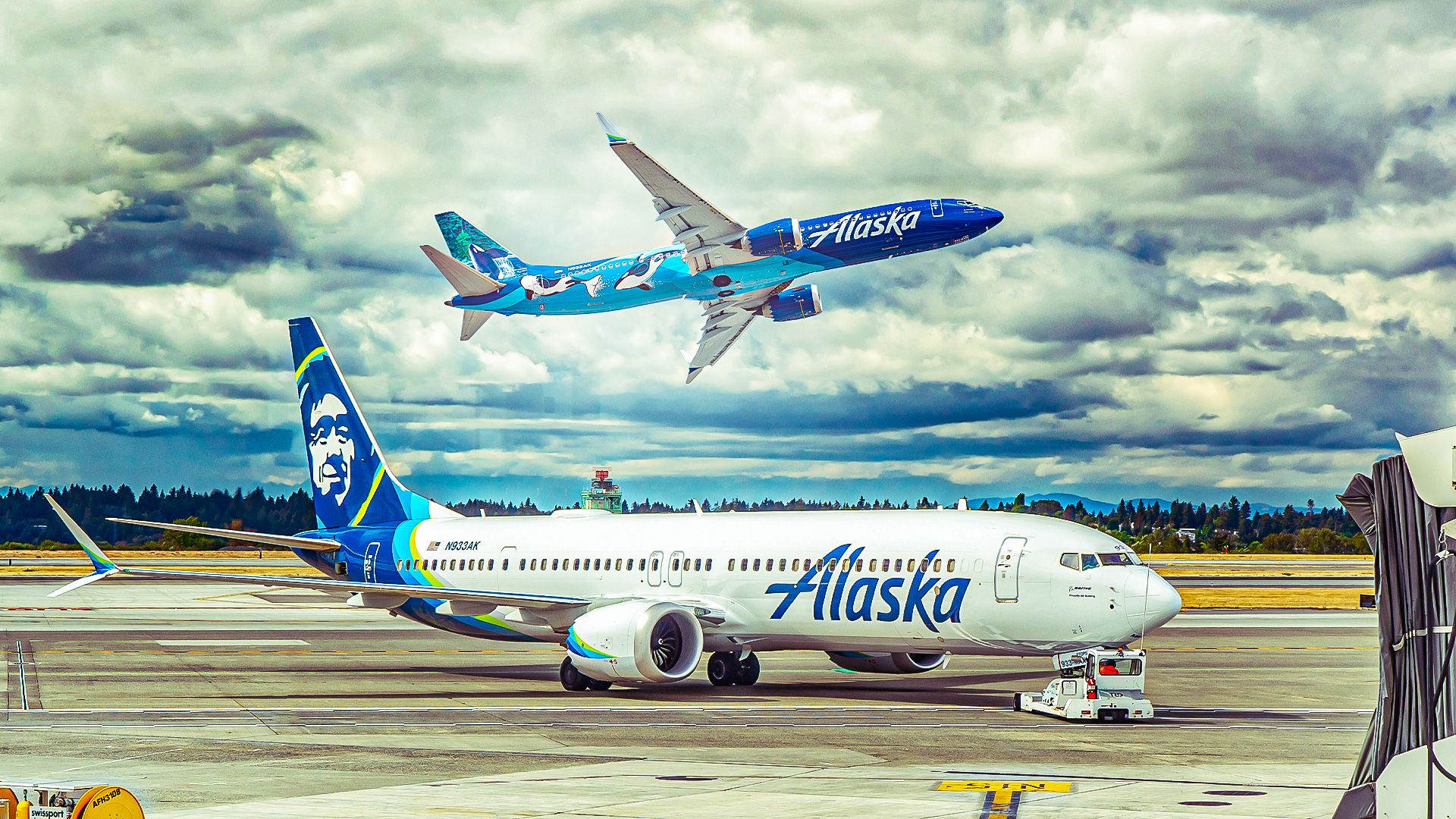World
Alaska Airlines Expands Longest Nonstop Routes with Boeing 737 MAX 9

Seattle-based Alaska Airlines is set to enhance its long-haul capabilities by introducing new nonstop routes using the Boeing 737 MAX 9 in 2025. Having evolved from a regional carrier to a major player in the U.S. aviation market, Alaska Airlines has expanded its operations through strategic acquisitions, including Virgin America and Hawaiian Airlines. The airline currently operates a fleet exclusively made up of Boeing 737 aircraft, but plans to incorporate Boeing 787 jets later this year, which will support its ambitions for international routes.
As of now, Alaska Airlines maintains a fleet of 238 Boeing 737s, which includes the 737-700, -800, -900ER, MAX 8, and MAX 9 models. Additionally, it has placed orders for 63 MAX 10 aircraft, with deliveries expected to begin in 2027. The MAX 9 variant, capable of seating up to 178 passengers, is particularly favored for short and medium-haul routes. This aircraft boasts a range of 3,300 nautical miles and a cruising speed of approximately Mach 0.79.
Key Nonstop Routes for 2025
The longest nonstop route for Alaska Airlines in 2025 will connect Anchorage Ted Stevens International Airport (ANC) to Detroit Metropolitan Wayne County Airport (DTW). This seasonal flight is scheduled to operate weekly from June 14 to August 16, 2025, covering a distance of 2,985 miles (4,776 kilometers) with a flight duration of approximately six hours and 20 minutes. The route will provide a total of 1,780 seats for the ANC to DTW leg, resulting in 5,313,300 available seat miles (ASMs). Notably, both Alaska Airlines and Delta Air Lines will serve this route.
The second longest nonstop service will link San Francisco International Airport (SFO) with Daniel Oduber Quirós International Airport (LIR) in Liberia, Costa Rica. This route, which covers 2,946 miles (4,713 kilometers), is set to operate 15 times from SFO to LIR and 14 times in the opposite direction, solidifying Alaska Airlines’ position as the largest carrier on the West Coast to Latin America. Launched in December 2024, this service will run seasonally during the Northern Hemisphere winter period, offering a total of 2,670 seats on the SFO-LIR route, translating to 7,865,000 ASMs.
Additional Notable Routes
Among the more unique offerings is a seasonal nonstop service between Seattle and Nassau Lynden Pindling International Airport (NAS) in the Bahamas. Although this route has been popular for its scenic appeal, Alaska Airlines has decided to suspend it due to financial viability concerns. Previously, the route covered a distance of 2,886 miles (4,716 kilometers) and operated 32 times, offering a total of 5,696 seats.
Another significant route is the service connecting Anchorage to Ellison Onizuka Kona International Airport (KOA) in Hawaii, covering 2,874 miles (4,598 kilometers). This route will facilitate crucial travel between Alaska and Hawaii during the summer months, with a total of 53 southbound and 58 northbound flights scheduled.
In 2025, Alaska Airlines will also maintain a year-round connection between Chicago O’Hare International Airport (ORD) and Anchorage, with 136 nonstop MAX 9 services planned. This will account for 24,208 available seats and 68,895,000 ASMs, highlighting the airline’s commitment to enhancing its network.
Overall, Alaska Airlines continues to expand its operations with the Boeing 737 MAX 9, paving the way for increased connectivity and service options for travelers in 2025. The airline’s strategic decisions in route planning and fleet management reflect its ambition to dominate the West Coast market and explore new international destinations.
-

 World3 months ago
World3 months agoScientists Unearth Ancient Antarctic Ice to Unlock Climate Secrets
-

 Entertainment3 months ago
Entertainment3 months agoTrump and McCormick to Announce $70 Billion Energy Investments
-

 Lifestyle3 months ago
Lifestyle3 months agoTransLink Launches Food Truck Program to Boost Revenue in Vancouver
-

 Science3 months ago
Science3 months agoFour Astronauts Return to Earth After International Space Station Mission
-

 Technology2 months ago
Technology2 months agoApple Notes Enhances Functionality with Markdown Support in macOS 26
-

 Top Stories1 week ago
Top Stories1 week agoUrgent Update: Fatal Crash on Highway 99 Claims Life of Pitt Meadows Man
-

 Sports3 months ago
Sports3 months agoSearch Underway for Missing Hunter Amid Hokkaido Bear Emergency
-

 Politics3 months ago
Politics3 months agoUkrainian Tennis Star Elina Svitolina Faces Death Threats Online
-

 Technology3 months ago
Technology3 months agoFrosthaven Launches Early Access on July 31, 2025
-

 Politics3 months ago
Politics3 months agoCarney Engages First Nations Leaders at Development Law Summit
-

 Entertainment3 months ago
Entertainment3 months agoCalgary Theatre Troupe Revives Magic at Winnipeg Fringe Festival
-

 Politics2 weeks ago
Politics2 weeks agoShutdown Reflects Democratic Struggles Amid Economic Concerns





















